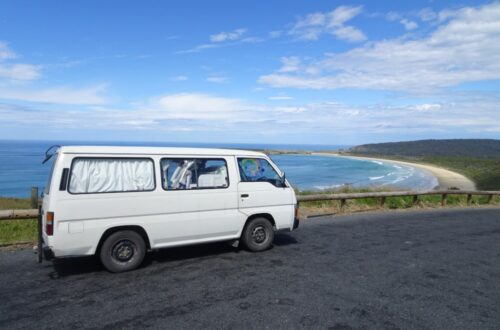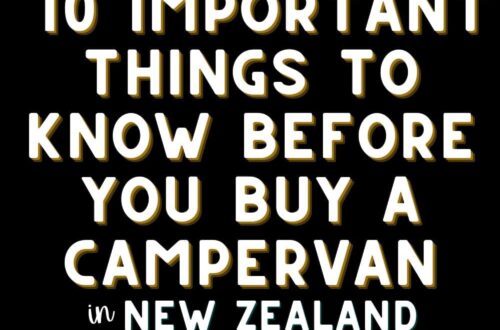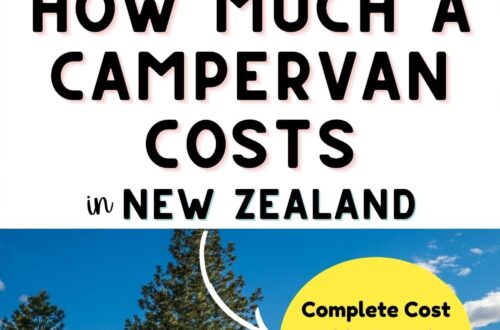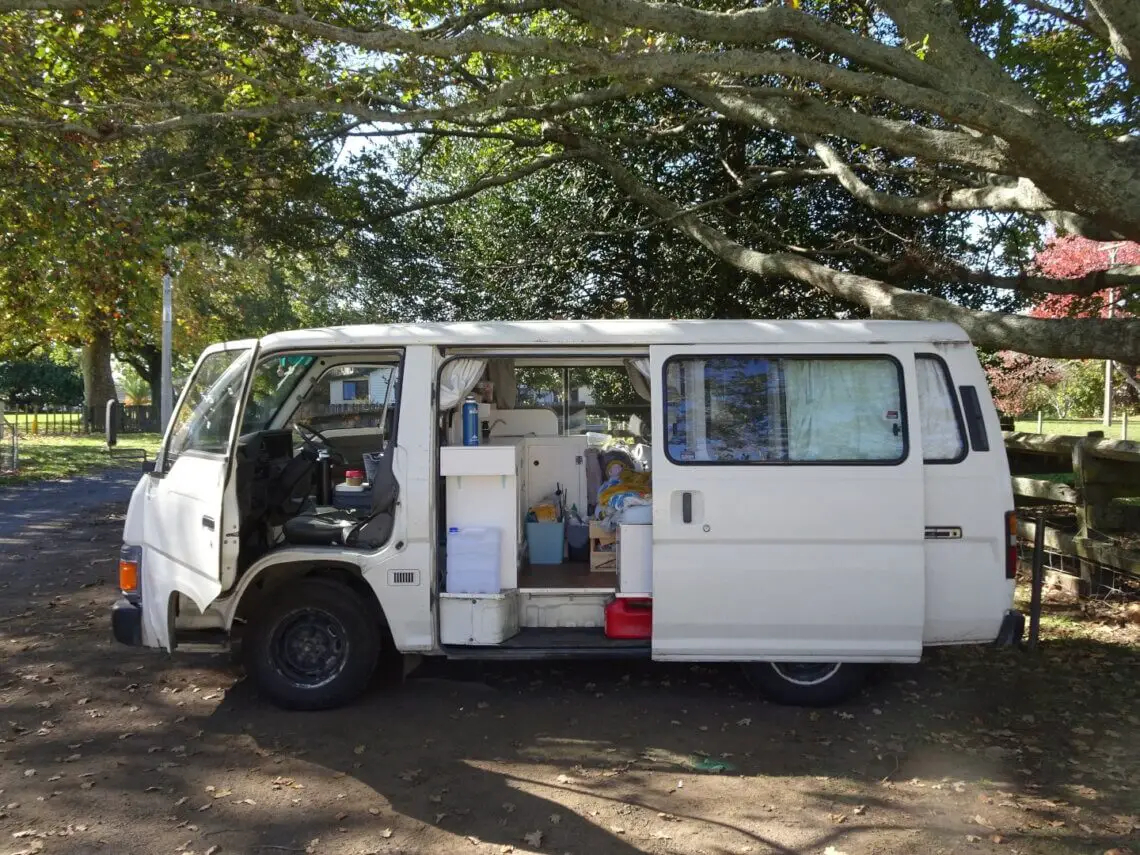
16 Most Popular Campervan Models For Backpackers To Buy | New Zealand
Updated: 12th January 2025 By Lauren
Are you looking to buy a campervan for travelling in New Zealand but aren’t sure which model would suit you best?
This post will give you an idea of which model of campervan you may want to buy for travelling in New Zealand.
My partner Fiachra and I started searching for a campervan to buy as soon as we arrived in New Zealand. We spent two weeks looking at vans before deciding to buy one. Buying a campervan can be a daunting process. One of our biggest challenges was figuring out which was the best model of campervan for us! If only there was a post like this to help guide us through! Well now, there is! 😊
In this post, I will share with you the different car and campervan models we looked at and go over the pros and cons of each model. Plus, I’ve included photos of the inside and outside of each. I will also tell you which campervan model we chose to buy for our 1+ year plus trip in New Zealand and why.
Save this article to your Pinterest board.
Which Campervan Model To Buy For Travelling In New Zealand: Your Complete Guide
Our Search For A Campervan Model To Buy For Travelling In New Zealand
After arriving in Auckland in early March 2020, we spent about two weeks researching and looking at different models of cars and campervans to buy for travelling in New Zealand.
Related Read: 6 Places To Find Secondhand Campervans For Sale | New Zealand
Even though we had just arrived in New Zealand, we were on the search for a campervan straight away as we knew we wanted to use it for the entire time we would be spending in New Zealand.
The Best Time To Buy A Campervan In New Zealand
We were quite lucky as we were buying our campervan at the end of the high season/summer. Almost all of the sellers we spoke with had bought their campervans at the beginning of the summer had travelled in them for a few months and were now looking to sell them. This made it a buyers’ market and the perfect time to buy a campervan. There were many available for sale and they were also much cheaper at the end of summer than they would have been at the beginning.
We also arrived in New Zealand in the early days of the Coronavirus Pandemic (March 2020), so many travellers were desperate to leave New Zealand as soon as possible and return home. This meant many were selling their vans as quickly and cheaply as possible so they could leave the country before the borders closed! It was sad for them to be in that situation but for us it turned out to be a good thing that we had decided to leave the UK and come to New Zealand at this time!
So generally, the best time to buy a campervan in New Zealand is in February/March/April at the end of the summer season. This is because campervans will be cheaper and there will be many more sales. The worst time is in September/October/November which is the beginning of the summer season. This is because many people go to New Zealand to travel in the summer.
Knowing Which Model Campervan To Buy For Our Trip in New Zealand
I couldn’t find much information online about the different models of campervans when we arrived. That meant that we had to do all the leg work of seeing them all ourselves!
We began to realise that there are quite a few popular models of cars and campervans which people tend to buy to use for travelling in New Zealand. All of them have their pros and cons. The model which you choose will be based on your budget and needs, so keep that in mind!
Hopefully, this post will save you some precious time so you know what you will be looking for when you are buying a campervan for travelling in New Zealand.
By the end of the week, we had purchased a new campervan for our journey travelling in New Zealand! I will share with you which model we decided to buy in the end and why!
It was quite stressful searching online for sellers, arranging viewings and test drives. Then we had to make decisions about whether to buy or not. And of course, the negotiation stages!
What We Wanted From A Campervan In New Zealand
We spent many days looking at different models of campervans for travelling. The process was exhausting but it was also very useful. It gave us a good idea of what we wanted and didn’t want from a campervan. By the end of our search, we knew what we wanted from our campervan. So we were very happy when we found what we were looking for!
Of course, the criteria will be different for everyone. But because it will give you a better idea of what we wanted, I will list it here.
Our Campervan Must Haves!
At the time, we were a couple in our late 20s – I was 29 and my partner Fiachra was 28. We arrived in New Zealand in March 2020 and planned to stay for a full 12 months minimum. We wanted to be able to live in our campervan for the duration of our time in New Zealand. So, for these reasons:
- The campervan needed to be comfortable for two people to live in through all seasons.
- It needed to be in reasonably good condition because we planned to do a lot of km in it all over the country.
- We wanted the freedom to be able to camp anywhere in New Zealand, so we were looking only at self-contained campervans.
- Lastly, our budget was a maximum of NZD$5000 (GBP£2500).
Optional Extras
Optional extras we were looking at, which would have been nice to have but not essential:
- A second battery – handy for charging devices and using our laptops in the van, as well as an electric cooler box.
- Fully kitted out kitchen and bedding – this would have saved us a few bucks if already included in the sale.
What Are Your Campervan Must Haves?
It might be helpful for you to write your list of your budget, needs and wants in a campervan model. This way you know exactly what you are looking for when choosing a campervan model to buy for travelling in New Zealand.
7 Important Considerations To Think About Before Buying A Campervan In New Zealand
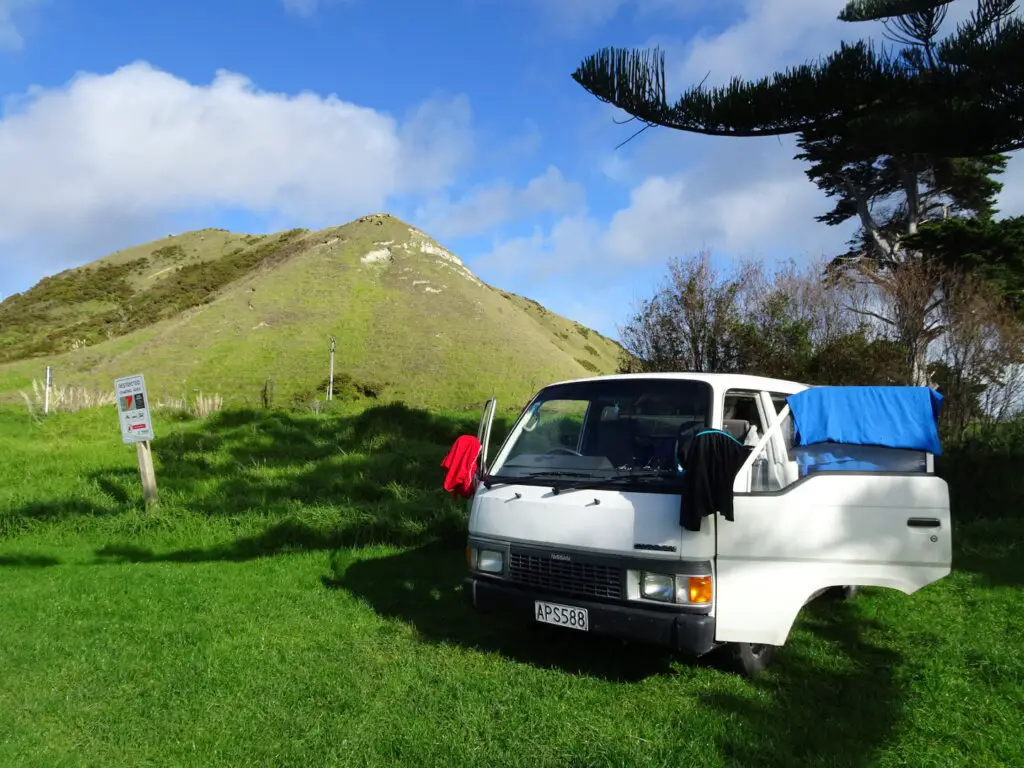
1. Manual/Automatic & Petrol/Diesel
Many campervan models can come in both automatic or manual versions and petrol or diesel versions.
Most older cars tend to be manual drives and newer ones tend to be automatic drives.
Most vehicles in New Zealand tend to be petrol as diesel engines are being phased out.
Diesel engines also incur a mileage charge (although the fuel at the pump is cheaper, so it kind of balances out). This can be paid at the Post Office by buying ‘miles’. It is called Road User Charges (RUC) and you can find out more here. So if you have a diesel engine this is another layer of bureaucracy you will have to navigate through!
2. Japanese Imports
Many vehicles in New Zealand are old Japanese imports.
It’s worth considering buying a Japanese model because parts will be plentiful and inexpensive. Many mechanics in New Zealand are used to working with old Japanese cars.
3. Long Wheel Base, Hi-Top & Pop-Top Campervans
You may also find Long Wheel Base (LWB), Hi-Top (HT) and Pop-Top campervans.
These models are really handy because they increase the living space inside the campervan.
You can find many models such as the Nissan Caravan and Toyota Hiace for example have LWB and HT versions.
It’s worth bearing in mind that you may find parking more difficult with a LWB and HT. Many car parks in New Zealand have height limits of 2m. So with a HT campervan, you could not fit into these car parks. LWB campervans may also have trouble fitting into a normal parking space, although it isn’t so much of an issue to stick out a bit.
Pop-Top campervans also exist in New Zealand but they are rare. These have a fabric roof that can be popped up or down. The advantage of these is more headroom inside and maybe even the ability to stand up! Mazda Bongo is a popular campervan model that has a Pop-Top version.
4. 2WD & 4WD
It is possible to find a campervan with 4WD. I would consider a 4WD if you can find one.
Many of New Zealand’s roads are not well-maintained! There are a lot of gravel/unsealed roads, even on popular routes. Especially in more remote, touristy places, you’ll 100% find rough roads. Most vehicles can handle it, but with a 4WD you don’t need to worry.
I wish I had known this earlier because I would have tried to find a 4WD campervan!
With a 4WD, you will also be able to drive along the 90 Mile Beach in Northland. It is a designated state highway, although only suitable for 4WD. Despite this, I don’t think driving on the beach is a good idea anyway. Think of the wildlife! Plus, if you drive on the beach and get stuck, your insurance company will not save you!
With 2WD, you will still be able to travel on most of New Zealand’s roads. Just make sure that you maintain your vehicle, your tyres are in good condition and have the right air pressure, and you have no suspension problems.
5. Rego & WOF
Vehicles need to have a valid Rego (Vehicle Registration) and WOF (Warrant of Fitness) to be road-legal.
Rego can be bought online or at the post office by completing a simple form. The cost is per month and is different for every vehicle (for example, on my campervan it costs $9 a month). You can buy one month to 12 months at a time.
To buy the Rego, your vehicle needs to have a WOF.
A WOF is a check on the vehicle to make sure it passes certain safety standards. Things like seat belts, tyres, breaks and windscreen wipers are checked. It is similar to the UK MOT.
The frequency of the WOF depends on the age of the vehicle. Vehicles older than the year 2000 (1999 or older) need to have a WOF every 6 months. Vehicles from the year 2000 and newer can get a WOF every 12 months.
Some people prefer to buy vehicles from the year 2000 or newer because of this requirement.
My campervan is from 1994 so I need to get a WOF every 6 months. It can be annoying but it is also helpful to identify any problems earlier on.
A WOF can be done at most mechanics in New Zealand and costs about $45-55 (varies depending on the garage as they set their charges). Any repairs required to pass the WOF will cost extra.
6. Self-Contained & Non-Self-Contained Campervans
Not all campervans will be self-contained (SC). Self-Contained vehicles have passed certain criteria to meet requirements for off-grid living. They contain a toilet, rubbish bins and enough water to last a few days off-grid.
A vehicle with self-contained certification is much more useful as it means that you can camp at any of the many freedom camping spots across New Zealand.
To identify self-containment, look for the blue sticker on the back of the vehicle. There will also be a blue certificate card stuck on the front window with the expiry date. There may also be a self-contained certification letter in the vehicle paperwork.
If you do not have a self-contained vehicle, you will often need to pay to park at campsites overnight. There are also a few freedom camping sites where you can park Non-Self-Contained (NSC) vehicles.
Because of these reasons, I would recommend that you buy a campervan model that is SC for travelling in New Zealand.
7. Campervan Interiors & Conversions
All campervans will look different on the inside!
A lot of campers have been designed, modified and upgraded by their owners over the years. Each one will have a unique style and personality.
Many campervans are going to be pretty basic inside. They are NOT going to look like those amazing #vanlife campervans you see on Instagram! Most campervans are going to be practical and functional. As long as they have everything you need, the rest is just vanity.
It can be hard to find one that you like, so you can always have a go at converting your campervan like we did!
We bought a campervan that needed a lot of work doing on it. But this meant we could buy it for a cheaper price. It was hard work, cost money and was time-consuming! However, we also learned A LOT by doing the conversion ourselves. So it was a really fun project.
16 Most Popular Campervan Models To Buy For Travelling In New Zealand
Now, for the good stuff. Here is a list of all the different car and campervan models we looked at while we were fresh in New Zealand after landing in Auckland!
I have included information on the pros and cons of each model, a general summary and a description of why we didn’t (or did!) buy it. There are also photos of the inside and outside of each model. All prices are in New Zealand Dollars.
All The Campervans We Viewed In Auckland, New Zealand (With Photos)
1. Toyota Estima
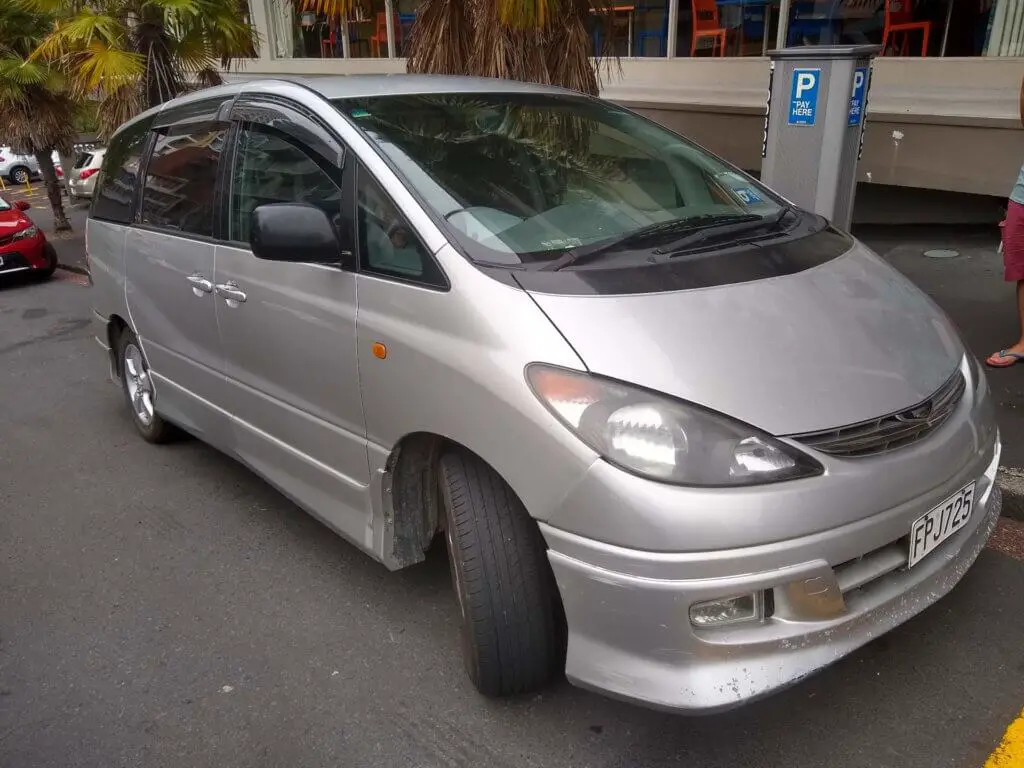
The Toyota Estima is not your typical kind of campervan. It is more of a large car making it big enough to fit a bed and small kitchen in the back. Many call them camper cars.
They are incredibly popular. The Toyota Estima is probably THE most popular backpacker camper car in New Zealand. This is mostly because they are cheap and in adundance!
Most models are from the early 2000s, but they haven’t aged well. Toyota Estimas are driven by mostly backpackers over thousands of KMs during the high season (Nov-Feb). Plenty of bumps and scratches show you the tales they could tell. Unfortunately, they also emphasize the neglect these cars face. Most backpackers don’t have the money (or quite possibly the care) to put in the effort to properly maintain the vehicles. If you’re looking at reliability and resale value, I am not sure the Toyota Estima would give you a good return.
That being said, one of our good friends has a Toyota Estima and he loves it! He has driven all around the country in it.
Campervan Models Similar To The Toyota Estima
The Honda Odyssey and Mazda MPV are similar in size and layout to the Toyota Estima.
The Toyota Estima We Looked At
- Transmission: Automatic
- Fuel: Petrol
- Year: 2003
- Asking price: $3000
Pros Of The Toyota Estima
- One of the cheapest campers you can buy – At the high season (Dec-Feb) you could expect to pay around $5000. In the low season (Jun-Aug) you could get them as cheap as $1000. (The one we looked at, the owner said she bought it for $5000 at the beginning of summer in November and was looking to sell it in March for $3000).
- Large enough to be considered self-contained – This means that the vehicle can fit in a small plastic toilet (that you will probably never use) and have two water containers in the back.
Cons Of The Toyota Estima
- Very small living space – There is just space for the bed (a large single/small double) and a small shelving unit to one side. It’s possible to sit up inside, like sitting in a car. It can not be considered spacious by any stretch of the imagination.
- Basic kitchen – Toyota Estima kitchens tend to be in the boot area. After you’ve met the self-containment requirements (water containers/sink), there isn’t much room for anything else!
- Poor condition – A lot of these campers have been used and abused. You’ll be lucky to find one without any bumps, scratches and dents.
- Low resale value – As there are so many of these for sale, you aren’t likely to get much back when you try to resell it.
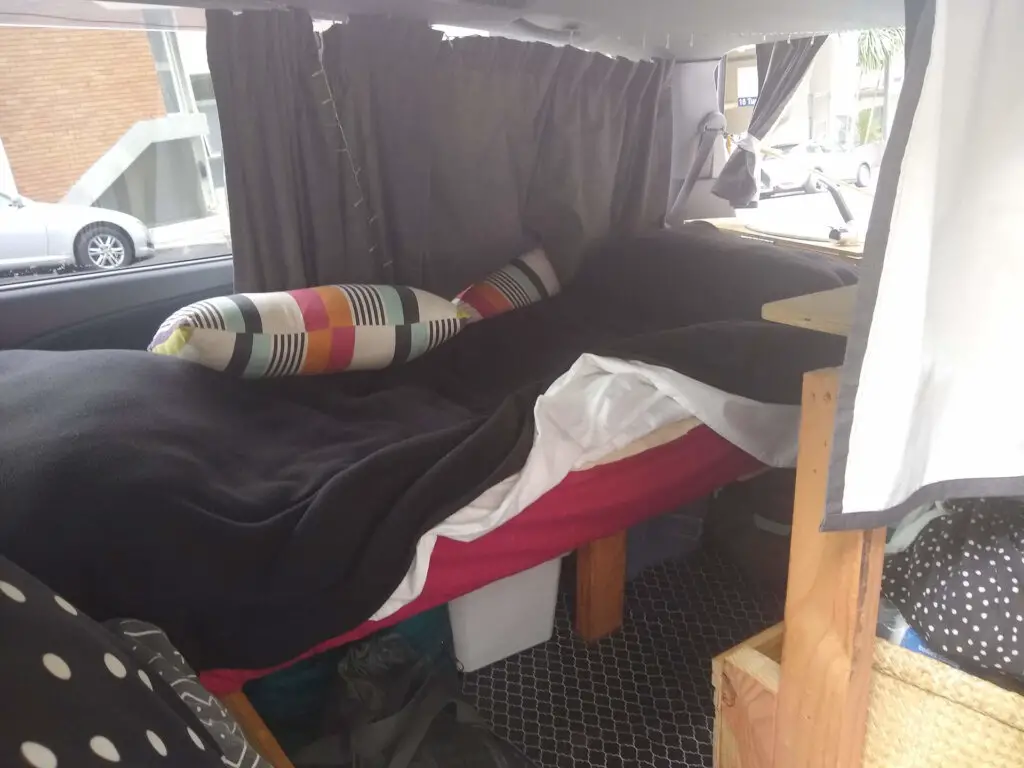
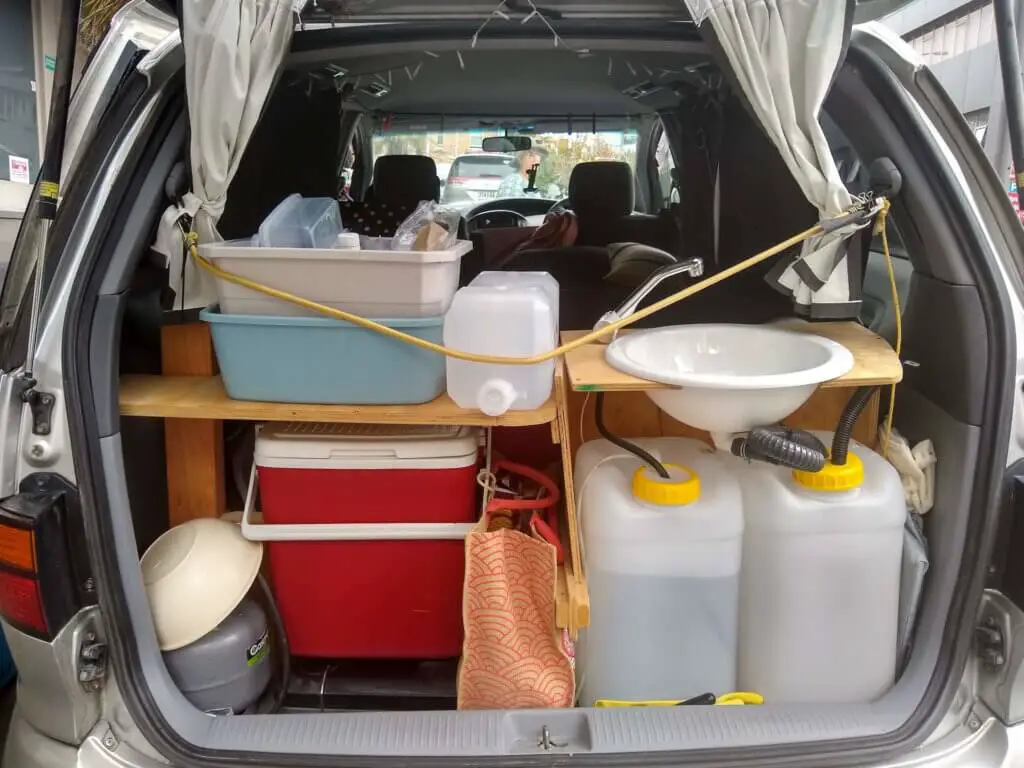
Summary Of The Toyota Estima
If you’re looking for a cheap model of campervan that you can buy quickly to use just for a few months of travelling in New Zealand, the Toyota Estima is a great consideration.
With self-contained certification, you have the freedom to camp anywhere. Looking like a car, the Toyota Estima blends in well if you want to be a bit inconspicuous.
For a solo traveller, the Toyota Estima is well worth it. It is cheap enough to buy on your own and although the living space is small, it is cosy enough for one person. A Toyota Estima is a perfect campervan for a single traveller.
For two people travelling together, I honestly recommend you forget the Toyota Estima and consider one of the options below. Although plenty of couples/friends do travel together in Toyota Estimas, you just couldn’t guarantee you would still be together by the end of it!
Why We Didn’t Buy A Toyota Estima
We decided that this model just wasn’t a good fit for us. As we planned to live in the vehicle for at least 12 months, we would need much more space to fit our belongings and be comfortable in!
2. Ford Econovan
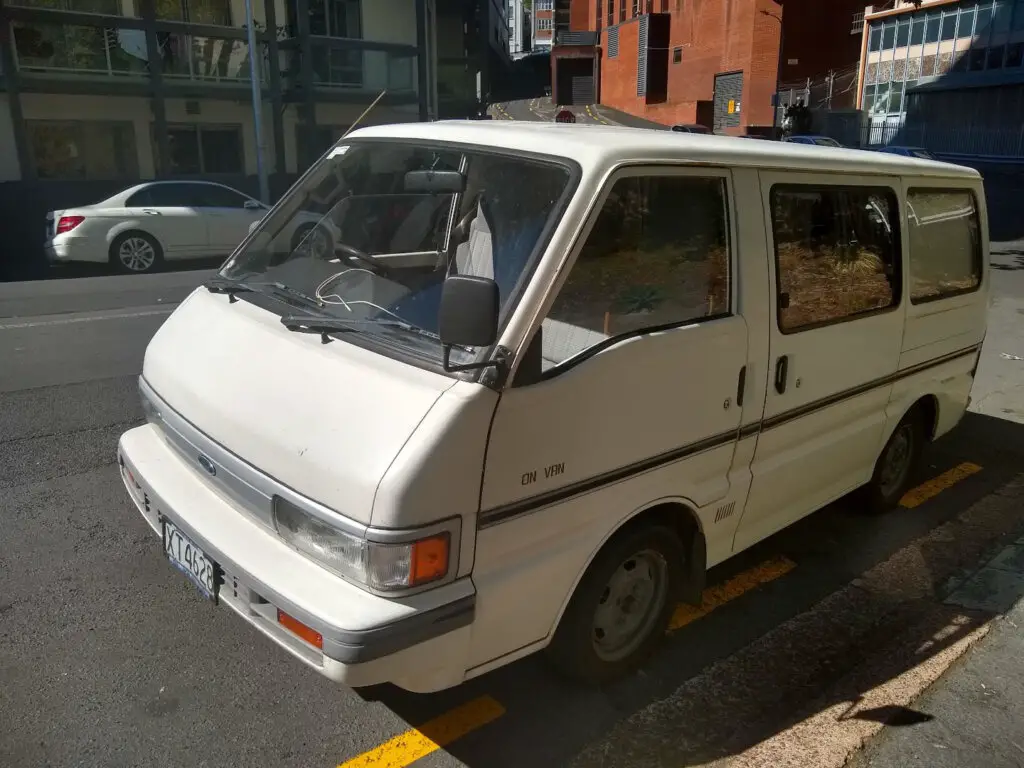
The Ford Econovan was the first model of campervan we looked at after we arrived in New Zealand.
The campervan was from the early 90s and had plenty of charm! The current owners had worked hard on doing some work on the van, including rearranging the kitchen in the back and doing a nice paint job (good work, guys!).
Compared to other models, Ford Econovans are not very popular in New Zealand but you do see them around.
A campervan like this is much more advantageous because the living space inside is bigger than a camper car.
Campervan Models Similar To The Ford Econovan
The Nissan Vanette and Mitsubishi L300 are quite similar in look and feel to the Ford Econovan.
The Ford Econovan We Looked At
- Transmission: Manual
- Fuel: Petrol
- Year: 1992
- Asking price: $4900
Pros Of The Ford Econovan
- Larger living space inside – A double bed plus a shelving unit.
- 3 seats in the front – In case you ever have an extra passenger, or just good for storing bags, maps etc.
- Self-contained – Freedom to camp anywhere!
- Complete kitchen unit, with plenty of storage space – The owners had done a great job of modifying the kitchen to include a lot more storage units, including shelving and pull-out draws.
- Old but reliable engine – Even in their old age Ford vehicles are well-built and consistently reliable.
Cons Of The Ford Econovan
- Difficult to drive – It may take more time to get used to driving a large, older vehicle with manual drive.
- Not a Japanese import – Many vehicles in New Zealand are imported Japanese models, so having one would make more sense as the parts would be plentiful and cheaper.
- Engine located under the seats – This can make DIY repairs more challenging as there isn’t a lot of room to manoeuvre.
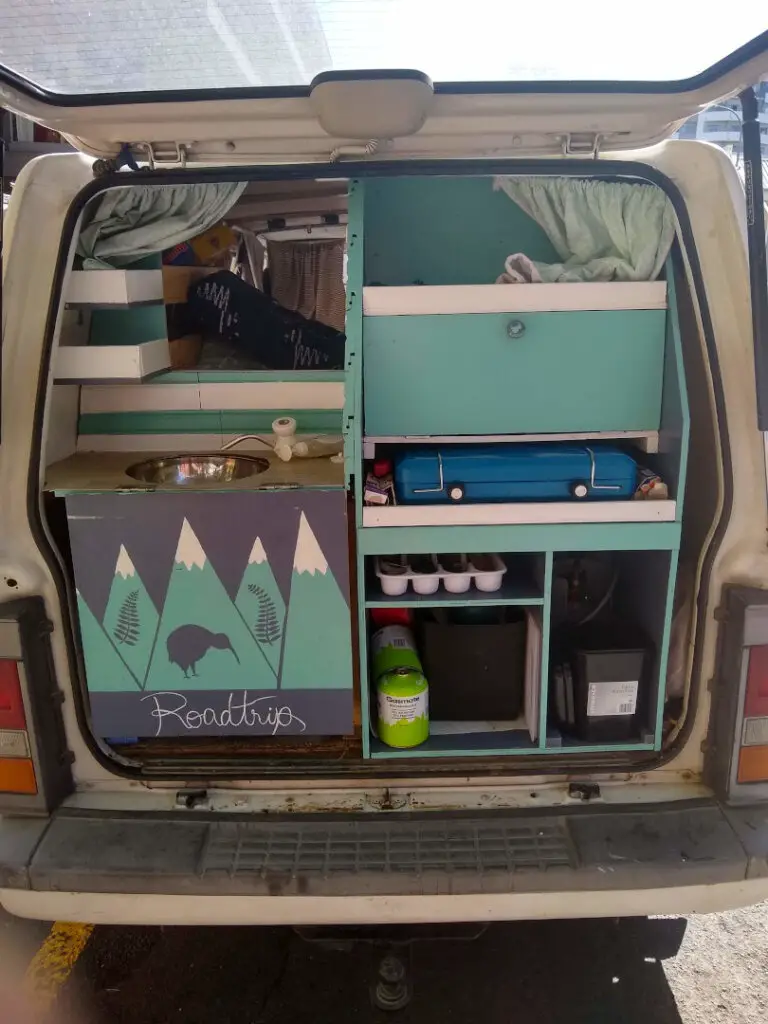
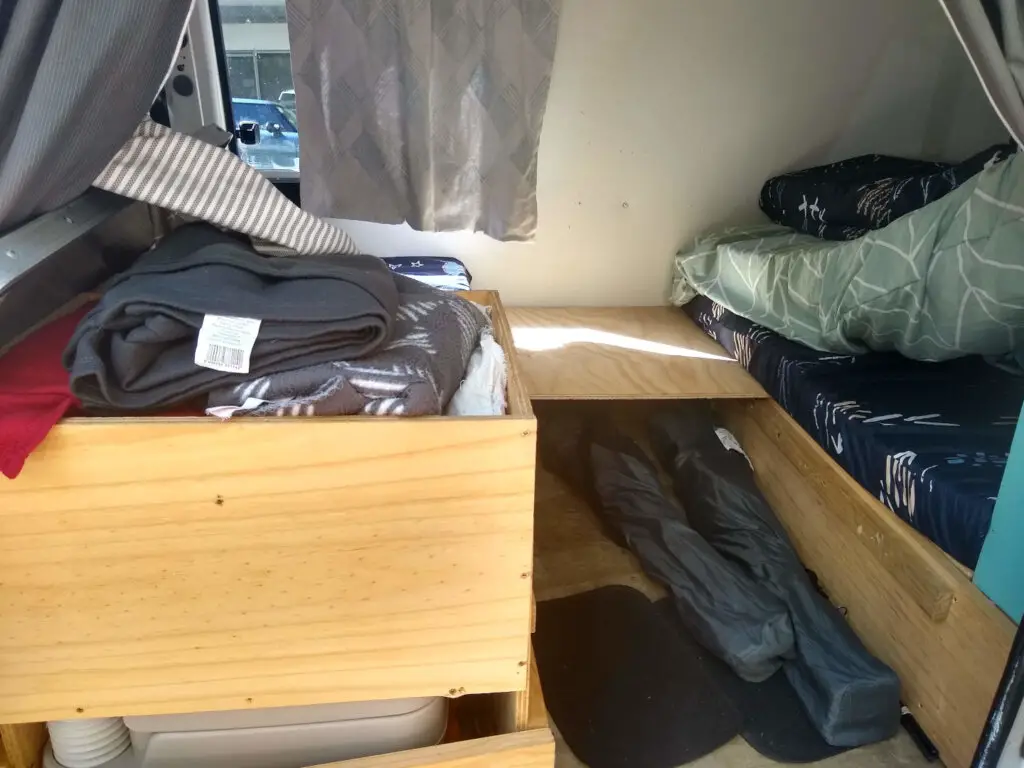
Summary Of The Ford Econovan
The Ford Econovan has a lot of charm. It looks like your typical cute campervan. It’s not as big as some models, but it still gives a couple a decent amount of space.
Fords have a great reputation for being reliable and long-lasting. So if you do decide to buy this model of campervan for traveling in New Zealand it’s unlikely you’ll ever be stuck in a rut!
On the other hand, Ford models are hard to come by in New Zealand, as the majority of cars people tend to buy are Japanese import models. Due to their rarity in this part of the world, parts for any repairs could be a higher price.
Why We Didn’t Buy A Ford Econovan
This was the first campervan we looked at. We did like it, as it had a lot of the charm we wanted from a campervan. It was cute, inside and out.
However, as it was the first one we looked at, we wanted to see a few others to give us a good idea of the different campervans on the market (this certainly helped me with writing this blog post too!).
The space inside was just a little bit too cramped as well. If the layout had been different, then maybe we would have gone ahead with it. Things we didn’t like were that the kitchen unit was on the back, although this is popular in many campervans in New Zealand. The toilet unit was also stuck in a shelving unit which blocked the doorway. It didn’t make sense to me, but maybe it was the best the current owners could have come up with.
Also, when I took it for a test drive this van just didn’t give me a good feeling – I found it clunky and difficult to handle.
I had a Ford in the UK and they are reliable and easily fixed in the UK due to the abundance of parts available. However, I can’t say the same about New Zealand. I think if we had gone for the Ford Econovan, it could have cost a lot more in case any repairs needed doing.
You just have to listen to what you’re heart says!
3. Nissan Serena
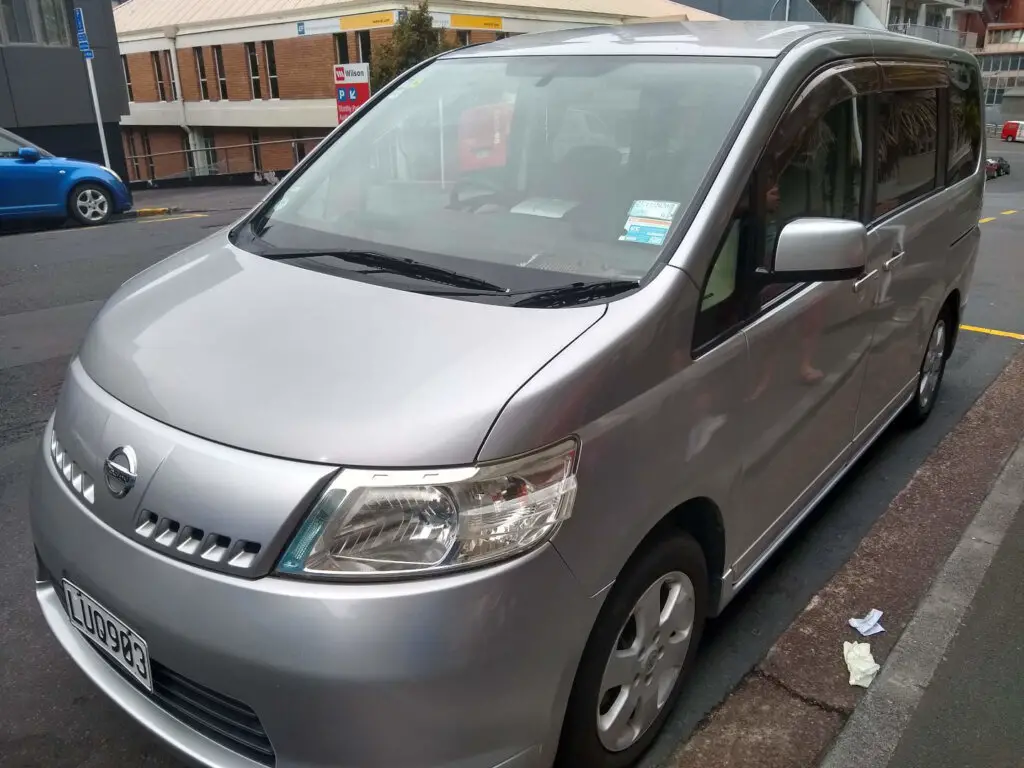
The Nissan Serena is becoming more popular as a backpacker camper car in New Zealand. They are slightly more pricey than the Toyota Estima but give much more room.
As modern vehicles, they tend to be more comfortable in the driving area.
Campervan Models Similar To The Nissan Serena
The Nissan Elgrand and Toyota Noah are similar to the Nissan Serena.
The Nissan Serena We Looked At
We looked at two Nissan Serenas and they were both pretty similar.
- Transmission: Automatic
- Fuel: Petrol
- Year: 2005/2007
- Asking price: NZD $6500/6900
Pros Of The Nissan Serena
- Looks like a regular car – It does not look like a campervan, meaning you can be more conspicuous, especially in cities.
- All the mod cons – Air conditioning, tinted windows, electric windows, comfortable seats, cup holders etc… it has it all.
- Decent amount of space inside – The double bed can also be converted into a seating area.
- Easy to drive – A modern automatic car which is really easy to handle.
Cons Of The Nissan Serena
- Awkward to convert to living space – Both Nissan Serenas we looked at did not have a good layout. Every time you wanted to put the bed down you’d have to move the seats forward and shuffle everything around.
- Smaller kitchen located in the back – It’s common in New Zealand campers for the kitchen to be located in the back. But this can be a disadvantage if it’s raining outside and you want to cook your dinner! We also felt that the kitchen storage space was much smaller.
- Self-contained, but at a price – Having self-contained certification means you can camp anywhere. However, carrying all that equipment uses up valuable space.
- More expensive – As newer models, the Nissan Serena will be more expensive than older vehicles.
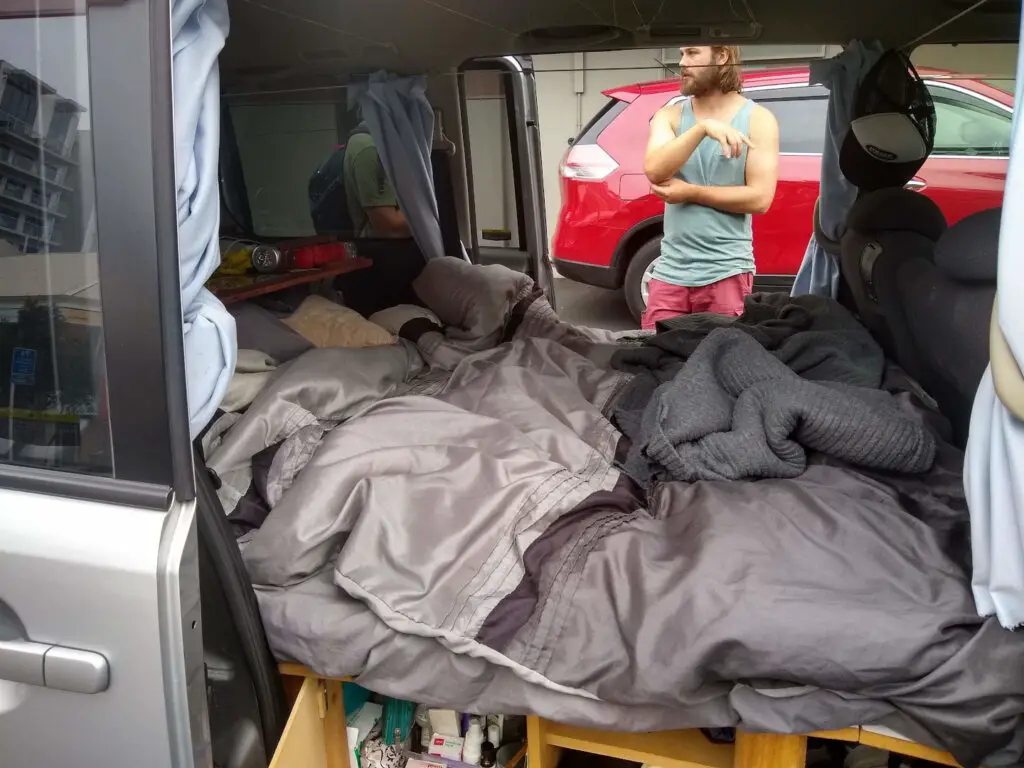
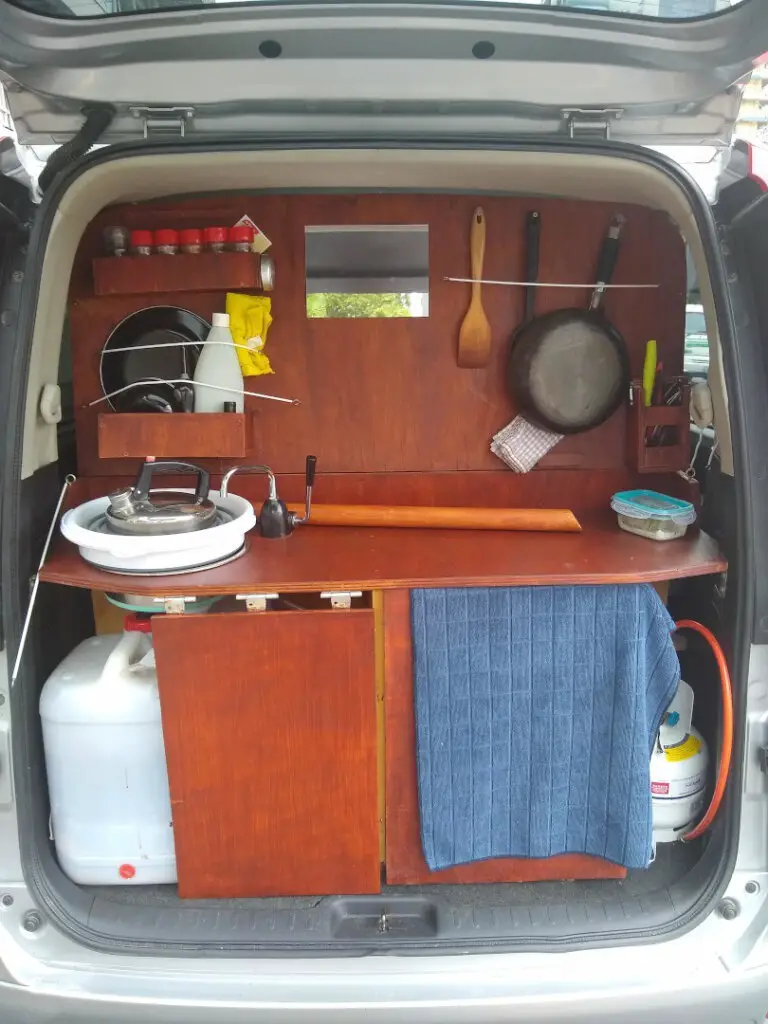
Summary Of The Nissan Serena
This is a comfortable car with a lot of great modern features.
If you’re a single person or a couple looking to do a few weekends to month-long road trips in a car-style campervan then the Nissan Serena is a great option.
Many people do it, but I’m not sure if I could live in the Nissan Serena long-term. I felt that there was simply not enough space for two people to be comfortable for more than a few weeks.
Why We Didn’t Buy A Nissan Serena
Both cars we viewed were almost identical, including in their layout, apart from a couple of quirks.
2007 Model
The 2007 model had a screen in the front, however, it was stuck in Japanese and no one could figure out how to change the settings. My Japanese is okay, but it isn’t that good!
The 2007 model also had unfortunately had not been looked after by its current owners.
It was smelly and dirty inside (shocking how many people will not even bother to tidy up for potential buyers!), and not only that, but they had also crashed it into something and it had a huge hole in the front panelling.
They also (for some strange reason) had never been using the handbrake the whole time they had owned the car (they “didn’t know what it was”).
The spare wheel well also dragged along the bottom of the car as we took it for a test drive, making a terrible scraping noise every time we went downhill or over a bump.
God knows what else was wrong with it. I immediately we told them we were not interested, not only because of the condition but the asking price – $6,900. I felt this was too much for a car in this condition. Plus, it was way above our budget!
2005 Model
Although the 2005 model was older, it was SO much better looked after. It was perfect on the outside and had none of the dents and scratches that backpacker campervans in New Zealand usually have.
The mileage on this car was also very low (around 100,000 km) compared to many backpacker cars.
We did consider and we were willing to put an offer down on the 2005 model, but someone else had already beat us to it and the current owners had settled with them.
In hindsight, I am glad that we didn’t go for the Nissan Serena in the end as the campervan we did buy was cheaper, bigger and more charming!
4. Nissan Caravan
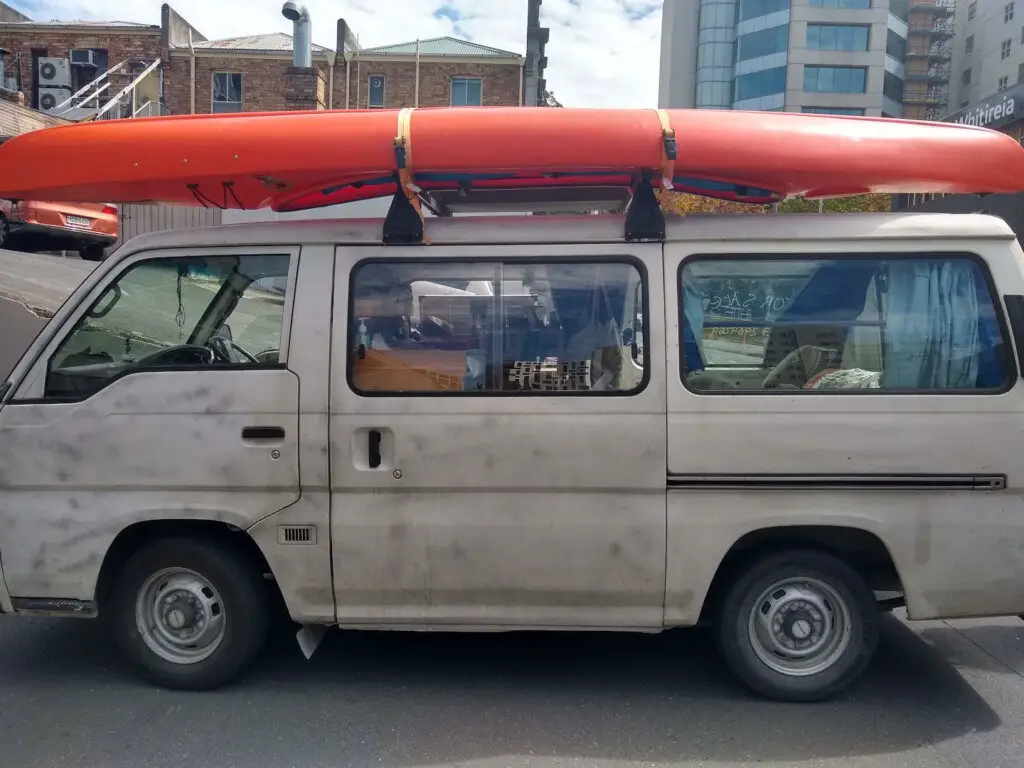
The Nissan Caravan is also known as the Nissan Urvan and the Nissan Homy.
It’s quite a popular campervan model to buy in New Zealand.
You can find Nissan Caravan models from the early 1990s to the late 2010s. The older models may be a little worn, but they still tend to have a lot of mod cons. You can get air con, electric windows and radio players in older and newer models.
There are HT and LWB versions of the Nissan Caravan.
These vans tend to be old mini-buses or work vans. They have had the seats/storage ripped out the back and then converted into campervans.
Campervan Models Similar To The Nissan Caravan
The Nissan Caravan is almost identical to the Toyota Hiace. The look and feel of these vehicles inside and out are pretty much the same.
They are also very similar to the Nissan Vanette and Mitsubishi L300. However, the Vanette and L300 are slightly smaller and more compact versions compared to the Caravan and Hiace. They are more similar to the Ford Econovan.
The Nissan Caravan We Looked At
We looked at two Nissan Caravans and they were both pretty similar.
- Transmission: Manual
- Fuel: Petrol
- Year: 1994/1999
- Asking price: NZD $4000/5500
Pros Of The Nissan Caravan
- Spacious living area with queen-size bed – As an actual van there is much more space inside compared to a camper car. The size of the bed depends on the furniture design but you will at least have a spacious double and at max a queen. The living area can be converted into a seating area.
- Lots of windows – The windows run the full length of the van which makes it very bright inside.
- The kitchen is located at the front inside the campervan – Very helpful when it’s raining and cold outside!
- More storage space – Due to the size of the van, there is much more storage space available.
- Available in Hi-Top and Long Wheel Base versions – If you’re lucky to find these you’ll be onto a winner!
- Good value for money – These campervans tend to sell for very reasonable prices ($4000 for older models – $10,000 for newer ones).
- Reliable engines with timing chains – Nissan Caravans are built well and will keep running for years and years with proper maintenance.
- 3 seats in the front – So you can bring along a friend or pick up a hitchhiker! Or just to store handy stuff for while you’re driving.
- Mod cons are still available – Even older models have air-con, electric windows and CD players.
- Easy to manoeuvre, despite its size – While driving the Nissan Caravan I didn’t feel overwhelmed by its size. It has a very flat front so it is easy to see out of and turn tight corners!
- Self-Contained with enough room to spare – the space inside is enough that you can use the portable toilet while someone is in bed, should you ever need to!
Cons Of The Nissan Caravan
- May need more maintenance and repairs – As a lot of these vans are quite old (from the early 90s), they may need to take more frequent trips to the mechanics! Having the vehicle service history when purchasing will help a lot. Also taking the vehicle for a Pre-Purchase Inspection check is a good idea.
- Engine located under the seat and parts located in weird places – Due to the location of many of the engine parts, it can make DIY repairs more challenging.
- Poor safety rating – The Nissan Caravan, like many other older cars, does not have a good safety rating. If you get into an accident, you’re screwed. There are no airbags. However, some models do have bull bars for added protection.
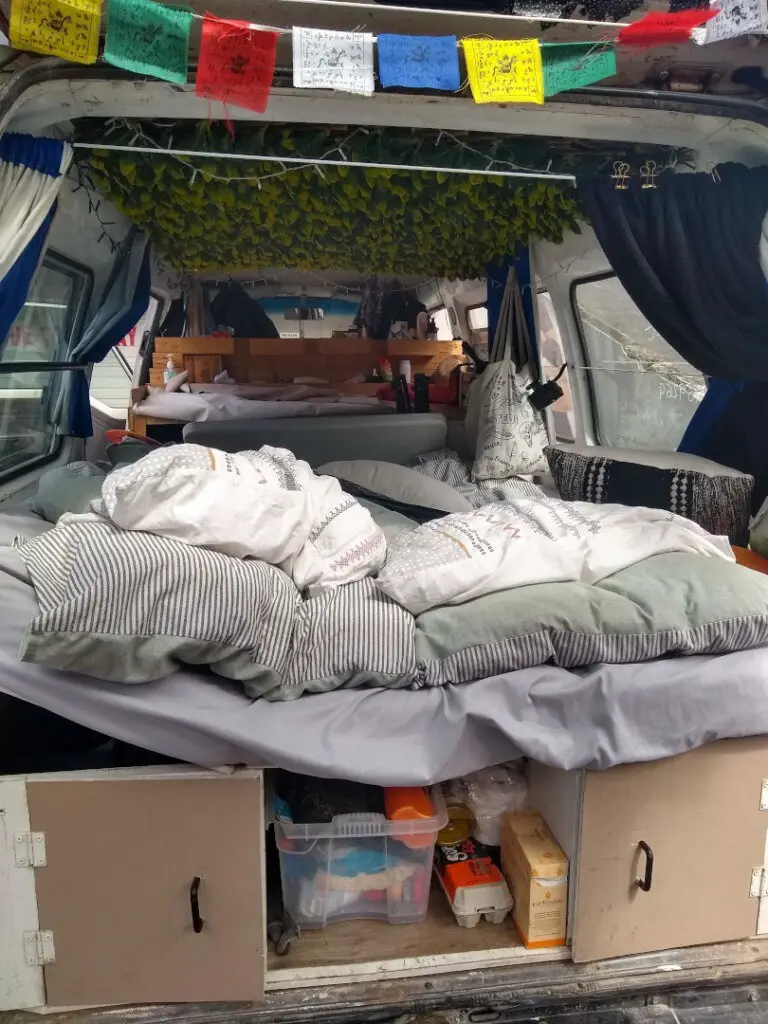
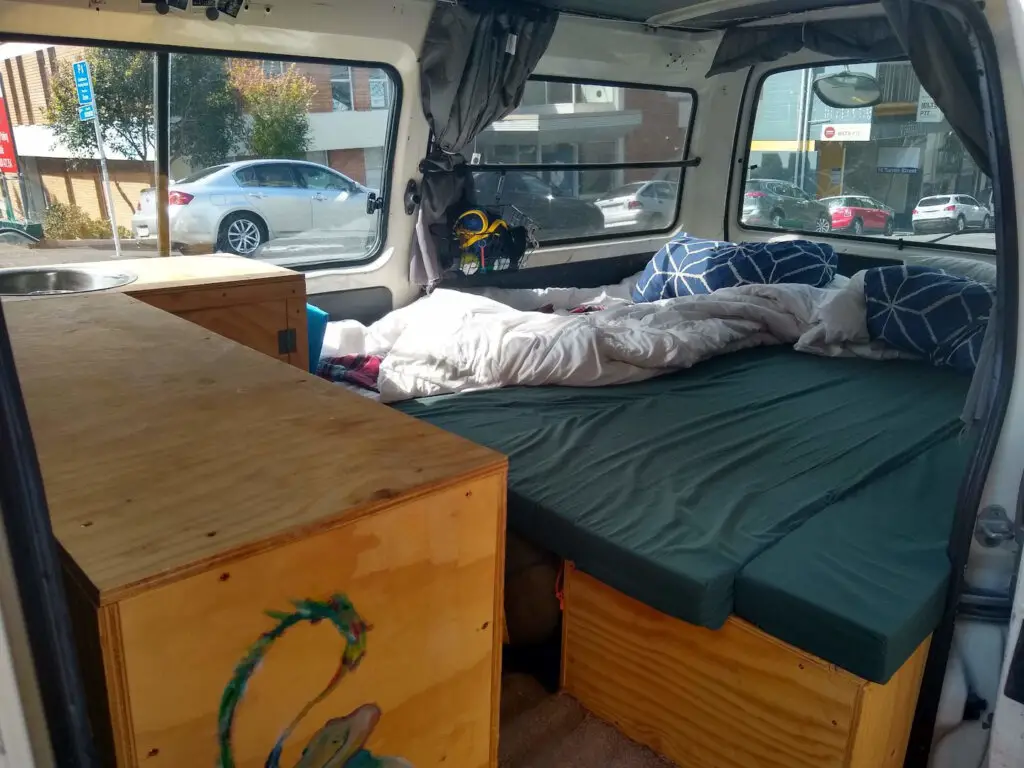
Summary Of The Nissan Caravan
We fell in love with the first Nissan Caravan we saw! It was the type of campervan that I had always dreamed about owning!
After seeing the other campervans listed above, I realised that the Nissan Caravan was the model we were after.
The main advantage of the Nissan Caravan is that the cooking area is inside of the campervan. This means that you can cook inside and remain warm and dry when it’s raining.
There is also plenty of storage space and a large living space.
It’s a great campervan whether you are a solo traveller or a couple. As a couple, you will have much more space in this model campervan to both be comfortable. As a solo traveller, you will have more than enough room.
The Nissan Caravan is an excellent choice model of campervan to buy for travelling in New Zealand. This model campervan could take you on many adventures all over New Zealand.
It would be possible to live in this model campervan for many weeks or even months at a time.
Why We DID Buy A Nissan Caravan!
After viewing the Nissan Caravan, we decided to take the plunge and purchase it!
We felt that the Nissan Caravan ticked all our boxes. It was everything we wanted from our campervan.
It is a spacious van that is suitable for a couple. Plus, it is the kind of van that can be used in all seasons. We wanted to live in our campervan for the majority of our time in New Zealand, so this criteria was very important to us.
How We Bought Our Campervan
We took both of the Nissan Caravans we viewed for a Pre-Purchase Inspection (PPI). I highly recommend taking a vehicle you are seriously interested in purchasing for an inspection. This can help identify any problems with the vehicle which aren’t obvious from looking at it and taking it for a test drive. You can get an inspection done with AA for around $180.
We are so glad we did PPI. Although the 1999 Nissan Caravan we viewed looked beautiful, the PPI told us that it needed a lot of mechanical work! The AA guy even advised me NOT to buy it! Doing this check potentially saved us a lot of trouble and money.
Fortunately, the 1994 Nissan Caravan did really well at the PPI. The AA mechanic told me that it was in really good condition despite its age. He advised it was a good one to buy so we decided to go ahead. Knowing the van was mechanically all good put our minds at ease.
After agreeing on a price, we met with the sellers and did an instant bank transfer using Revolut to pay for the campervan. Then we owned our first-ever campervan! 😃
Converting Our Campervan
The only downfall was that the 1994 model did not have a completely converted interior. It was basically a shell with some wooden furniture in the back. It would have been nice to buy a van that was converted to a hi-spec. But, we decided that it would also be a really great opportunity to convert the van to exactly how we wanted it. We got the van for a really great price, so the extra money we saved from our budget we could use on the conversion. This project was more than what we wanted to take on, but I am really glad we did it. It learned so much! And I am really proud of what we have achieved.
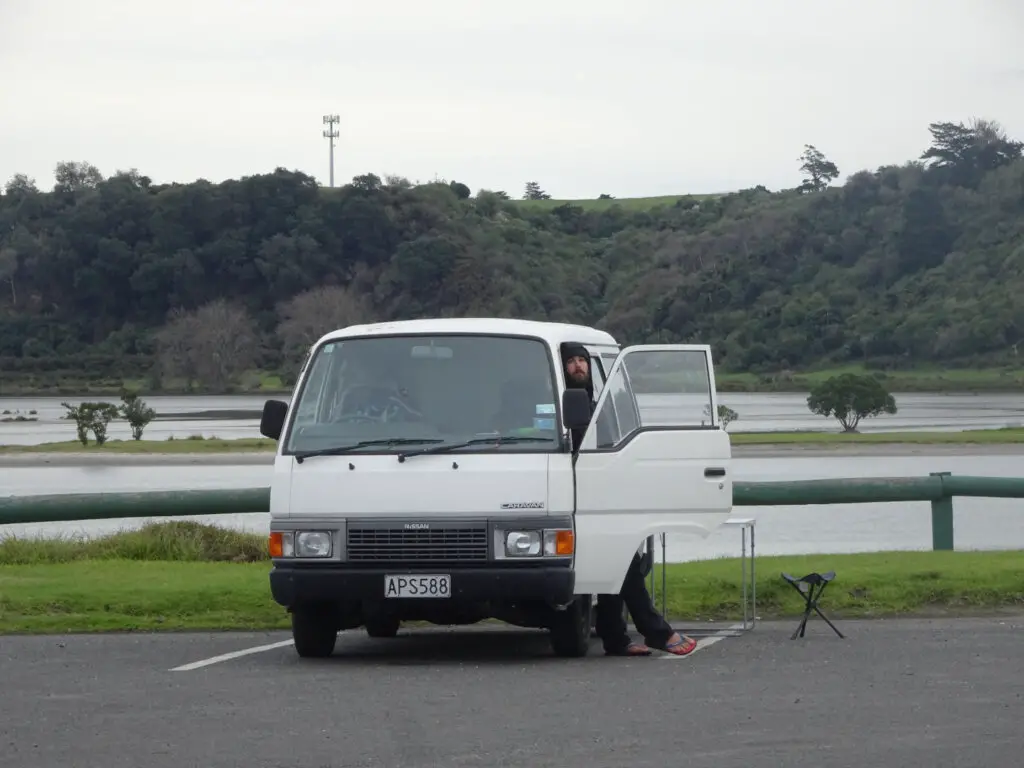
Other Popular Models Of Campervans For Backpackers To Buy For Travelling In New Zealand
We didn’t view any of these vehicles, but we have seen them around during our travels in New Zealand. They are also very popular campervan models for backpackers to buy for travelling in New Zealand.
5. Toyota Hiace
- The Toyota Hiace is possibly the most popular campervan model to buy for travelling in New Zealand.
- It is almost identical to the Nissan Caravan. The look and feel of these vehicles inside and out are pretty much the same.
- They tend to be reliable.
- You can get HT, LWB and 4WD versions.
- It is a really great choice for a campervan.
- It is perfect for a couple to travel together.
6. Toyota TownAce
- Similar to the Toyota Hiace but smaller. Also known as LiteAce. Has a similar shape and feel to the Toyota Estima.
- It would be good for a single traveller or a couple.
7. Toyota Noah
- The Toyota Noah is a larger camper car. It is very similar to the Nissan Serena and Mazda MPV.
- I recommend this for travellers who only want to take short breaks in their campervan.
8. Mitsubishi L300
- Another great choice is the L300. Although slightly smaller, they are cute and tend to be converted well.
- They are quite a popular campervan model to buy for travel in New Zealand.
- Our friends had an L300 and loved it!
- It is another good choice for a couple.
- It is similar to the Nissan Vanette.
9. Mitsubishi Delica
- A smaller campervan, similar in look and feel to the Toyota TownAce.
- They are not very popular in New Zealand but still worth mentioning.
10. Nissan Elgrand
- A larger-style camper car, similar to the Nissan Serena and Toyota Noah.
- This is a good choice for travellers wanting to take short breaks.
11. Nissan Vanette
- This is like a smaller version of the Nissan Caravan. It is very similar to the Mitsubishi L300.
- They are quite a popular campervan model to buy in New Zealand.
- You can find nice campervan conversions in the Nissan Vanette.
- It is reasonable for a couple and roomy for a single person.
12. Mazda Bongo
- Older versions of the Mazda Bongo are similar to the Toyota Hiace and the Nissan Caravan. However, more modern versions of Mazda Bongos seem to have a more boxy car shape to them.
- Mazda Bongos also tend to have Pop-Top roofs, so if this is something you are interested in you’ll be looking at this campervan.
- They are very popular with couples and families.
13. Mazda MPV
- A camper car that is similar to the Toyota Estima.
- This would be a good choice for a solo traveller.
14. Honda Odyssey
- Another camper car, similar to the Toyota Estima.
15. Ford Transit
- A much larger campervan with a higher roof.
- They are very popular in the UK and the US. They are not such a popular campervan model to buy in New Zealand but I do see them sometimes.
- Comes in LWB and HT versions.
- Many feature complete kitchens and bathrooms, with hot water, showers and toilets.
- They are much more expensive so they are at the top end of the range.
- The Ford Transit is good for a couple wanting to have a tiny house on wheels or a family road trip.
16. Mercedes-Benz Sprinter
- Another larger campervan, similar to the Ford Transit.
- Again, they are not very popular in New Zealand.
- Many feature complete kitchens and bathrooms, with hot water, showers and toilets.
- They are also much more expensive than a typical backpacker campervan.
- This kind of van is good for a couple wanting to live long-term in their van or a family on a holiday.
Campervans In New Zealand: Which Model To Buy For Traveling? – Thanks For Reading!
Thanks so much for reading! I hope this complete guide about camper cars and campervan models helps you. 😊
Are you looking for a campervan model to buy for travelling in New Zealand? Or have you already bought a campervan in New Zealand? Let me know in the comments which one you bought or are thinking of buying and why! 🚐
Learn more about campervans in my latest posts:
- 7 Tips For Buying A Campervan In New Zealand
- 16 Must-Have Apps For Van Life In New Zealand
- Ultimate Cost Guide To Buying A Campervan In New Zealand
- 10 Essential Things To Know Before You Buy A Campervan | New Zealand
- 16 Most Popular Campervan Models For Backpackers To Buy | New Zealand
Travelling in New Zealand? Find out where to go and what to see:
- 10 Lonely Lighthouses To Visit In North Island, New Zealand
- Free Natural Hot Pools & Springs In North Island, New Zealand
- Waiheke Island Wineries: Ultimate Guide For Wine Tasting (& Map)
- North Vs South Island New Zealand: Which Is Better To Visit?
- New Zealand True Crime: 11 Shocking Cases (And Best Podcasts)

Did you find this article useful? Let me know in the comments or join me on X, Threads, Facebook, Pinterest and Instagram.
If you enjoyed this post, share it with a friend! 💌
Join my Facebook Group WildLovelyWanderers!
Say thanks and send me a virtual coffee on Ko-Fi!☕
If you enjoyed this post, share it with a friend! 💌
Pin This Post!
Add this post to your Pinterest board.


